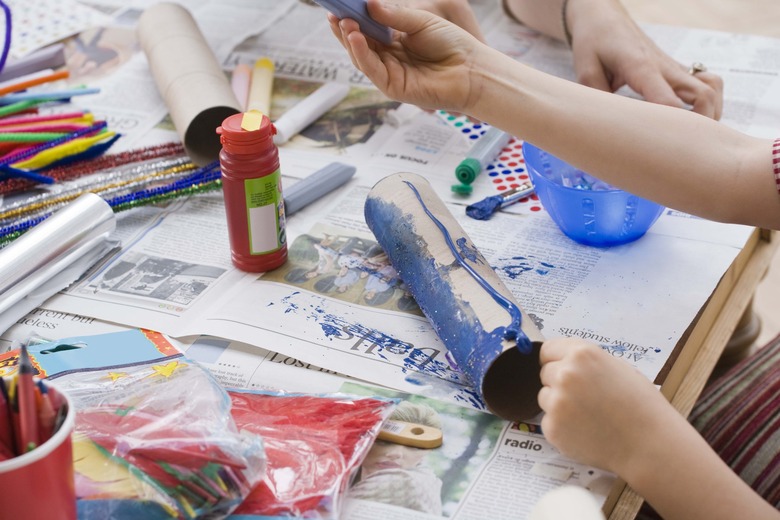How To Make An Ocean Diorama For The Third Grade
A potential project when studying the ocean in elementary school is to make a diorama depicting an ocean scene. Third-grade students should be able to research the ocean, select some plants and sea creatures that may be found together and find pictures of them to include in a diorama. Although a diorama can take many forms, some basic principles outline the process of making an ocean diorama.
Step 1
Paint the inside of a shoebox or other small box with blue paint. You can also swirl some green paint into the blue to add some depth to the ocean background.
Step 2
Turn the shoebox on its side so the open edge is facing you.
Step 3
Apply a light layer of glue with a paintbrush to the side of the shoebox that is now at the bottom. Sprinkle sand over the glue until it is all covered. After the glue is dry, shake off any excess sand.
Step 4
Research ocean ecosystems and food chains using magazines, books and online resources. Select one group of plants and sea creatures to include in the diorama.
Step 5
Cut out pictures of the creatures and plants that you selected. Also include pictures of other elements of the habitat such as rocks, coral and seaweed.
Step 6
Glue plants to the background of the ocean diorama. For pictures of rock and coral, fold them and glue one half to the bottom of the box and other half will stand up; you can place these in the middle and toward the front of the box.
Step 7
Cut pieces of thread of varying lengths but all shorter than the distance from the top of the diorama to the bottom. Tape one end of each piece of thread to the back of a creature and tape the other end to the top of the ocean diorama so the creatures hang throughout the box.
Things Needed
- Shoebox
- Blue paint
- Green paint
- Paintbrush
- White glue
- Sand
- Pictures of sea creatures, plants, rocks, coral
- Scissors
- Thread
- Tape
TL;DR (Too Long; Didn't Read)
Make sure to follow any special instructions your teacher provides about what your diorama should be like. For example, you may need to have a certain number of plants and creatures or make labels for all the different things in your diorama.
References
Cite This Article
MLA
May, Kristen. "How To Make An Ocean Diorama For The Third Grade" sciencing.com, https://www.sciencing.com/make-ocean-diorama-third-grade-6373922/. 24 April 2017.
APA
May, Kristen. (2017, April 24). How To Make An Ocean Diorama For The Third Grade. sciencing.com. Retrieved from https://www.sciencing.com/make-ocean-diorama-third-grade-6373922/
Chicago
May, Kristen. How To Make An Ocean Diorama For The Third Grade last modified March 24, 2022. https://www.sciencing.com/make-ocean-diorama-third-grade-6373922/
